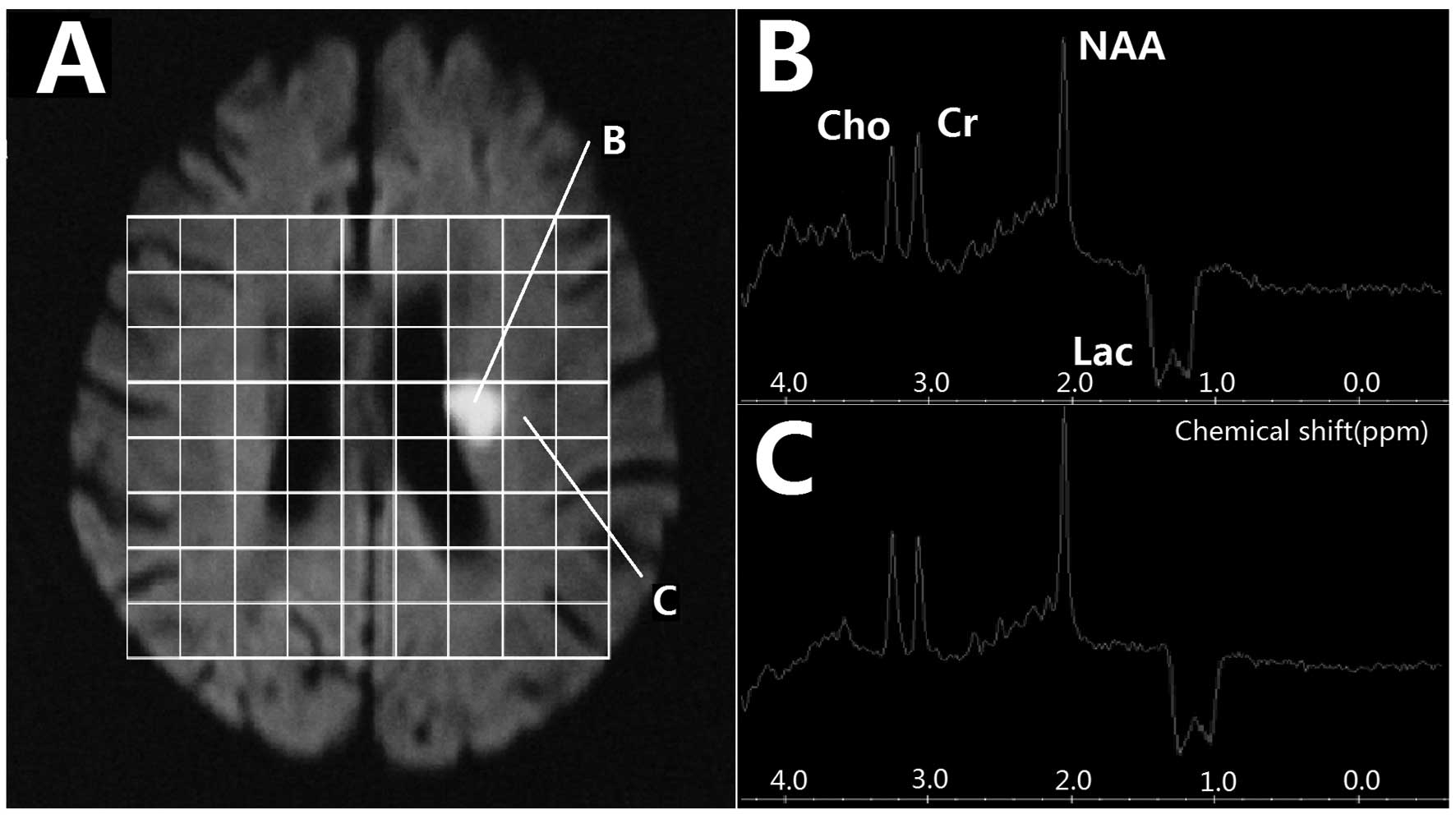|
1
|
Hosomi N, Sueda Y, Masugata H, et al: The
optimal timing of antihypertensive medication administration for
morning hypertension in patients with cerebral infarction.
Hypertens Res. 35:720–724. 2012. View Article : Google Scholar : PubMed/NCBI
|
|
2
|
Vernino S, Brown RD Jr, Sejvar JJ, et al:
Cause-specific mortality after first cerebral infarction: a
population-based study. Stroke. 34:1828–1832. 2003. View Article : Google Scholar : PubMed/NCBI
|
|
3
|
Wardlaw JM, Zoppo G, Yamaguchi T and Berge
E: Thrombolysis for acute ischaemic stroke. Cochrane Database Syst
Rev. 3:CD0002132003.
|
|
4
|
Coutts SB, Modi J, Patel SK, et al: What
causes disability after transient ischemic attack and minor
stroke?: Results from the CT and MRI in the Triage of TIA and minor
Cerebrovascular Events to Identify High Risk Patients (CATCH)
Study. Stroke. 43:3018–3022. 2012. View Article : Google Scholar
|
|
5
|
Cvoro V, Marshall I, Armitage PA, et al:
MR diffusion and perfusion parameters: relationship to metabolites
in acute ischaemic stroke. J Neurol Neurosurg Psychiatry.
81:185–191. 2010. View Article : Google Scholar : PubMed/NCBI
|
|
6
|
Ledezma CJ, Fiebach JB and Wintermark M:
Modern imaging of the infarct core and the ischemic penumbra in
acute stroke patients: CT versus MRI. Expert Rev Cardiovasc Ther.
7:395–403. 2009. View
Article : Google Scholar : PubMed/NCBI
|
|
7
|
Kang SY and Kim JS: Anterior cerebral
artery infarction: stroke mechanism and clinical-imaging study in
100 patients. Neurology. 70(24 Pt 2): 2386–2393. 2008. View Article : Google Scholar : PubMed/NCBI
|
|
8
|
Maudsley AA, Hilal SK, Perman WH and Simon
HE: Spatially resolved high-resolution spectroscopy by
four-dimensional NMR. J Magn Reson. 51:147–152. 1983.
|
|
9
|
Li C, Ling X, Liu S, et al: Early
detection of secondary damage in ipsilateral thalamus after acute
infarction at unilateral corona radiata by diffusion tensor imaging
and magnetic resonance spectroscopy. BMC Neurol. 11:492011.
View Article : Google Scholar
|
|
10
|
Glodzik-Sobanska L, Li J, Mosconi L, et
al: Prefrontal N-acetylaspartate and poststroke recovery: a
longitudinal proton spectroscopy study. AJNR Am J Neuroradiol.
28:470–474. 2007.PubMed/NCBI
|
|
11
|
Chinese Medical Association Neurology
Branch Cerebrovascular Disease Study Group. Chinese treatment
guidelines of the acute ischemic stroke 2010. Chin J Neurol.
43:146–154. 2010.(In Chinese).
|
|
12
|
Cheng J, Feng G, Kong Q, et al: Study on
early ischemic cerebral infarction by using proton magnetic
resonance spectroscopy in rabbits. J Zhengzhou University (Med
Sci). 40:227–229. 2005.(In Chinese).
|
|
13
|
Ricci PE Jr: Proton MR spectroscopy in
ischemic stroke and other vascular disorders. Neuroimaging Clin N
Am. 8:881–900. 1998.PubMed/NCBI
|
|
14
|
Allen K, Busza AL, Crockard HA, et al:
Acute cerebral ischaemia: concurrent changes in cerebral blood
flow, energy metabolites, pH, and lactate measured with hydrogen
clearance and 31P and 1H nuclear magnetic resonance spectroscopy.
III Changes following ischaemia. J Cereb Blood Flow Metab.
8:816–821. 1988. View Article : Google Scholar
|
|
15
|
Li X, Wang B, Feng D, et al: Study of
diffuse axonal injury at early stage using proton magnetic
resonance spectroscopy. J Shanghai Jiaotong University (Med Sci).
29:1443–1446. 2009.(In Chinese).
|
|
16
|
Li X, Feng D and Ma Y: Current concepts:
role of magnetic resonance spectroscopy in diffuse axonal injury.
Chin J Neurosurg Dis Res. 8:92–94. 2009.(In Chinese).
|
|
17
|
Kim GE, Lee JH, Cho YP, et al: Metabolic
changes in the ischemic penumbra after carotid endarterectomy in
stroke patients by localized in vivo proton magnetic resonance
spectroscopy (1H-MRS). Cardiovasc Surg. 9:345–355. 2001. View Article : Google Scholar
|
|
18
|
Lanfermann H, Kugel H, Heindel W, et al:
Metabolic changes in acute and subacute cerebral infarctions:
findings at proton MR spectroscopic imaging. Radiology.
196:203–210. 1995. View Article : Google Scholar : PubMed/NCBI
|
|
19
|
Mader I, Rauer S, Gall P and Klose U:
1H-MR spectroscopy of inflammation, infection and
ischemia of the brain. Eur J Radiol. 67:250–257. 2008. View Article : Google Scholar
|
|
20
|
Vial F, Serriere S, Barantin L, et al: A
newborn piglet study of moderate hypoxic-ischemic brain injury by
1H-MRS and MRI. Magn Reson Imaging. 22:457–465. 2004.
View Article : Google Scholar : PubMed/NCBI
|
|
21
|
Walecki J, Barcikowska M, Ćwikła JB and
Gabryelewicz T: N-acetylaspartate, choline, myoinositol, glutamine
and glutamate (glx) concentration changes in proton MR spectroscopy
(1H MRS) in patients with mild cognitive impairment
(MCI). Med Sci Monit. 17:MT105–MT111. 2011. View Article : Google Scholar
|















